
What is the relationship between 5G and edge computing, and where they fit? How do the Internet IT domain and telecom CT domain merge? What is cloud-network integration? Nanshu, a Senior Technical Specialist of Alibaba DAMO Academy XG Laboratory, and Yiping, a Senior Technical Specialist of the Edge Computing Team, share the possibilities of edge computing with 5G.
The three core features of 5G are low latency, high bandwidth, and large connection.
1. Low Latency
The low latency offered by 5G is one millisecond, but it is important to note that one millisecond is only the radio latency. End-users may be more concerned about the device-to-device latency, and the simplest calculation logic of such latency is distance. The latency generated by distance is the optical fiber transmission latency, which is roughly one millisecond for 100 kilometers. In the 5G era, the essence of device-to-device latency is the optical transmission latency generated by distance.
In this way, we can compare the previous 2G/3G/4G situations. According to a test report by OpenSignal, in the 2G era, the optical fiber transmission latency is insignificant in the overall ratio of device-to-device latency. It means the radio latency accounts for the majority of the total latency.
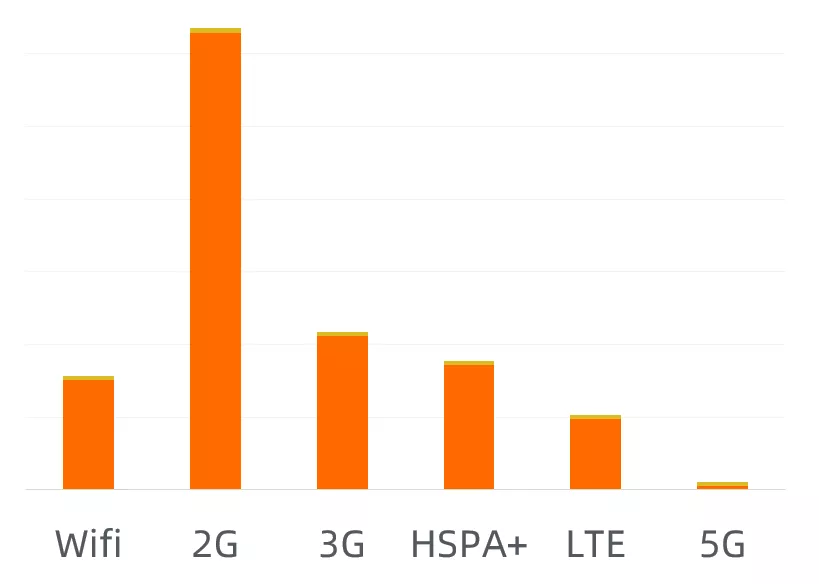
In the 5G era, the proportion is as high as 60%. Optical fiber transmission and geographical location will affect the device-to-device latency and the user experience substantially. For this reason, if the low latency of 5G needs to be better utilized, closer service deployment must be adopted to reduce the proportion of transmission in the overall latency. The edge computing technology in the IT field can meet this demand and become one of the driving forces to promote the development of mobile edge computing.
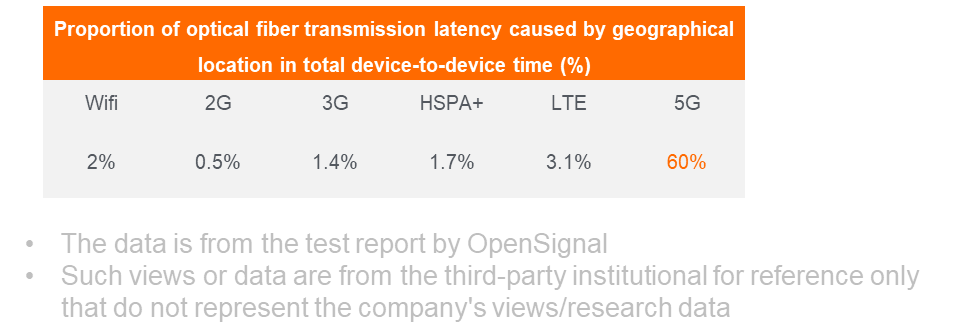
2. High Bandwidth
Another feature of 5G is its high bandwidth. On the one hand, users will see clearer videos and enjoy an immersive experience with a peak rate of up to 10G per second. On the other hand, there will be multiplying traffic costs for traditional centralized cloud deployment on the business side, and challenges will be presented to the overall network bandwidth construction of the operators. It is necessary to review the network architecture again and determine how to unload traffic from a centralized cloud to an edge cloud. Here, there is another point of agreement between 5G and edge computing. Through the edge deployment of the service, the bandwidth consumption of the backhaul link is reduced, and the cost and latency are reduced at the same time.
3. Large Connection
In a standard IoT scenario, a massive amount of data may be generated. If all the data is migrated to the cloud for processing, resources will be wasted. If data is pre-processed in the middle, downstream feedback can be made as soon as possible to form a closed loop of the IoT system. At the same time, upstream data can be aggregated to form swarm intelligence for IoT.
The intermediate position here is where the edge computing service is deployed. Therefore, based on the preceding analysis, the following conclusion can be summarized; the core capabilities of 5G will become the biggest driving force for the development of mobile edge computing.
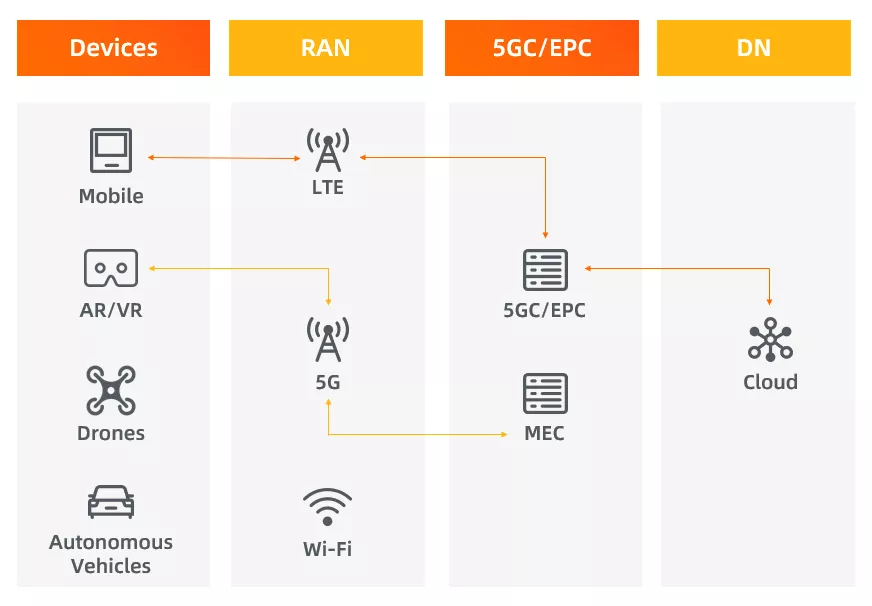
Edge computing reduces network latency significantly.
It would be too simple to think about edge computing in 5G from the perspective of bringing resources closer. In essence, edge computing is the concept of the Internet IT domain, while 5G is the concept of the communication technology (CT) domain. If we want to make good use of edge computing with 5G, it is necessary to integrate IT with CT, rather than simply doing one plus one. Integration includes architecture integration, deployment integration, and scheduling integration.
In terms of architecture fusion, the architecture of 5G, including the user plane function (UPF) core network that supports the edge computing function network element and the system, has been put into the 3rd Generation Partnership Project (3GPP), while the overall architecture of edge computing belongs to the European Telecommunications Standards Institute (ETSI). Each organization has evolved independently in a different direction. Therefore, the architecture must be integrated first to form an integrated architecture design.
The deployment in deployment fusion focuses on the UPF and Multi-Access Edge Computing (MEC) nodes. As the network element of the mobile network, the operators will deploy UPF according to their plans, while the MEC node belongs to the Internet company and is deployed in combination with its application scenarios and users. These two nodes are different, and deployment inconsistency may occur, which reduces the benefits of edge computing in the process. Therefore, independent deployment should be developed into integrated deployment. This leads to the third fusion, which is scheduling fusion.
Different users from the UPF and MEC served result in different traffic models and network metrics required for carrying services. Both parties deploy independent scheduling systems in their respective systems to consider factors, such as performance, capacity, cost, service quality. If such systems cannot perceive each other, this will lead to inconsistent flow directions between each other. The consequences will reduce the scheduling effect but also lead to unexpected results. Therefore, intra-domain scheduling that cannot perceive each other should be developed into global scheduling.
To sum up, fusion is the first thing to be considered for edge computing in the 5G era.
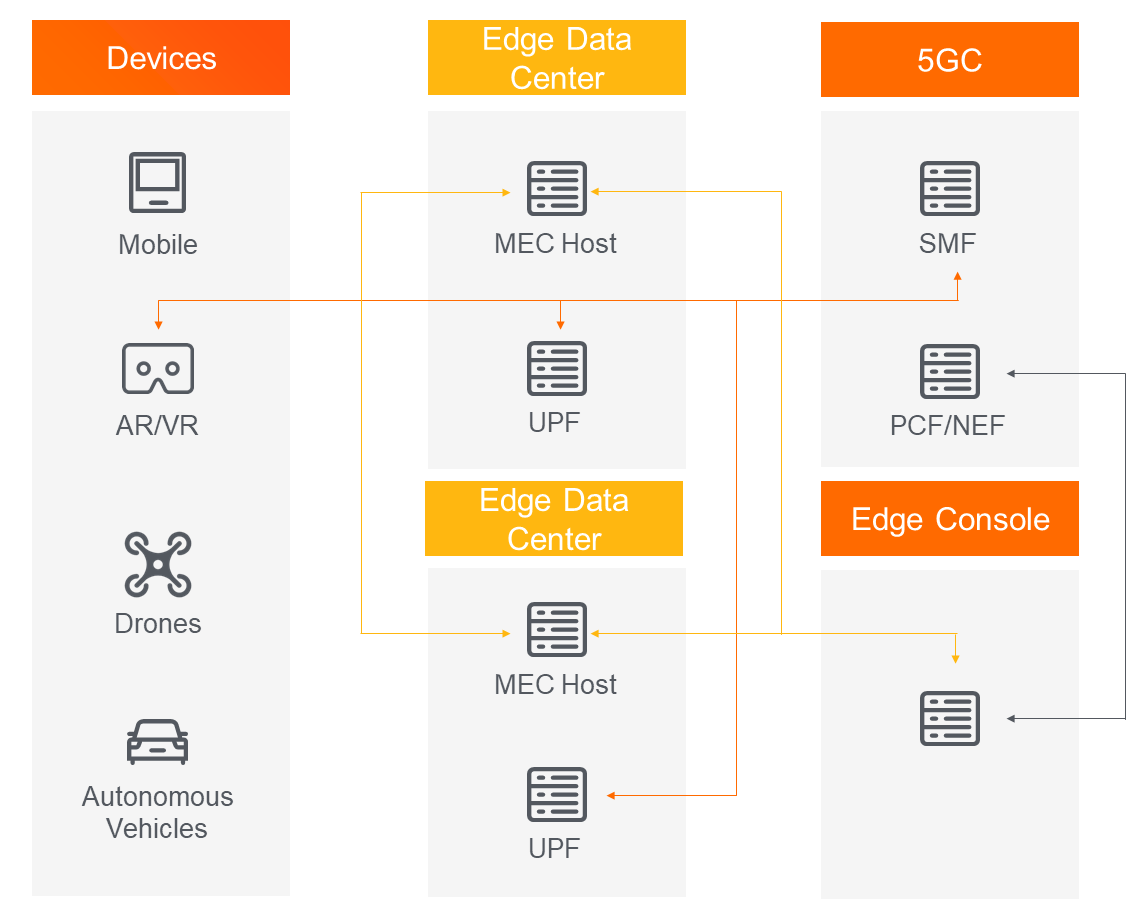
In general, edge computing is simply equivalent to IP traffic scheduling. In the 5G era, people will also think that from UPF node to MEC node is like drawing an IP data stream, just pulling the traffic of interest. However, edge computing under 5G can do a lot more.
Edge computing can change traffic-oriented management to service-oriented management. The drawn in traffic, the services carried on top of the traffic, and the services give the traffic more meaning. Therefore, when scheduling, the service requirements borne by the traffic need to be better considered rather than the simple data flow. Therefore, edge computing under 5G needs to evolve from traffic-oriented to service-oriented.
From the service-oriented perspective, if 5G edge computing is only positioned as a service deployment that is closer to users, it reduces the value of 5G edge computing. In addition to the advantages of low latency, service enhancements need to be considered further.
Due to the structural characteristics of the mobile network, compared with the traditional fixed network architecture, the mobile network adopts the mode of user interface flow and control interface management. Edge computing draws user plane traffic, but more control plane information can be obtained through interaction with the mobile network, such as SINR and Cell Load. The control plane data can provide more service capability combinations, enhance the external service capability of edge computing, and develop new business scenarios. For example, while pulling the traffic, the data, such as the overall cell load and signal strength seen at the control plane, can be used by the server for better congestion control. By doing so, the upper-layer services can adapt to the corresponding wireless environment to improve the user experience.
Finally, due to the existence of edge computing, the client/server architecture adopted by the Internet will be developed into the client/edge/server architecture. Therefore, the role of the edge in the overall process and the enhanced services brought by 5G must be considered. In the 5G era, an edge deployment service cannot be a deployment of the cloud service nearby. The service must evolve from a universal service to a 5G edge service. This is the only way to make good use of 5G edge computing.
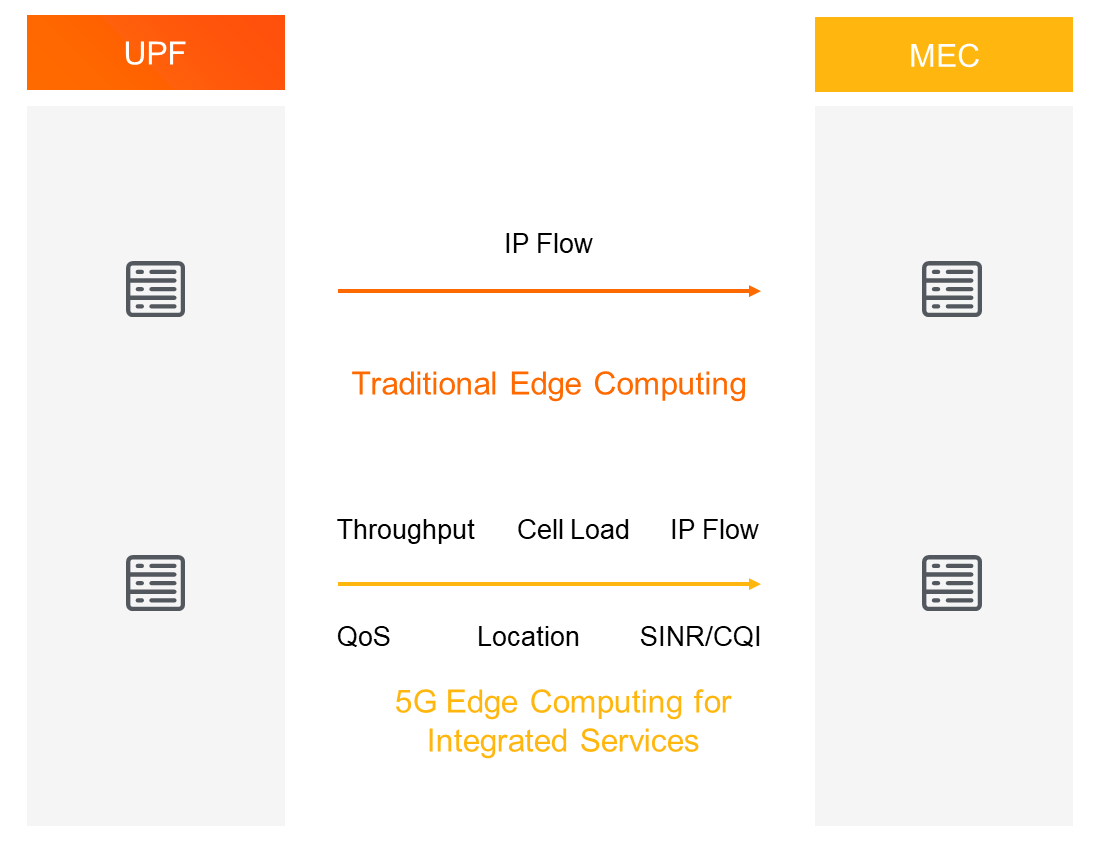
First, edge computing must not be is not isolated. Edge computing is an extension of cloud computing and expands the boundaries of the cloud. The edge is the data link between terminals and cloud centers. It is crucial to forming a cloud-edge-device integrated computing model.
The biggest advantage of cloud computing is the intensive computing on a large scale that will help achieve huge cost-effective benefits. However, it is unrealistic to concentrate all the computing on one point. In addition to the computing cost, another crucial factor in computing distribution is the cost of data transmission. The computing collaboration integrating cloud, edge, and device is a dynamic balance between the data transmission cost in the network and the intensive benefits of computing. In this form, the distribution of intensive computing will be affected by the continuous innovation of network infrastructure and technological capabilities.
Dozens of Cloud Regions worldwide are at the core of cloud computing. Regions provide powerful and efficient computing power based on large-scale centralized computing resources. Resource intensification also reduces the cost of unit computing power. The average data transmission cost to the terminal is also relatively high.
Extending downwards from the center of the cloud is the operator network, which connects hundreds of operator data centers. It is also the first layer of edge computing distribution nodes and provides small and medium-sized centralized computing power. The network used to cover the nearby computing and traffic scheduling at the provincial level. At the same time, the edge computing nodes at this layer build an SD-WAN network (i.e., software-defined wide area network) based on a large number of widely distributed data centers. This network is responsible for back-to-cloud acceleration and edge-to-edge acceleration, providing cloud-to-edge and edge-to-edge collaboration. Moreover, the network also prevents data transmission at the service layer from being affected by network fluctuations between the central cloud and edge clouds. Compared with the central cloud, intensive computing nodes generate smaller profits at this layer of computing nodes but the costs for data transmission to and from terminals are also reduced significantly.
5G allows edge computing to continue to extend downwards to operators' metropolitan area networks and connect tens of thousands of MEC nodes in the future. This is the second layer of edge computing distribution nodes, which provides centralized computing on a small and micro scale. The network is used to cover the nearby computing and traffic scheduling at the municipal level. Due to a closer distance to the terminal, lower latency, and lower costs, MEC nodes allow more computing that could only be performed at the terminals to be moved up to the edge, resulting in the pooling of computing power and cost benefits. Moreover, 5G will provide more capabilities to control the network transmission quality from terminals to the edge, allowing it to optimize the device-to-edge network service quality based on scenarios. It reduces costs without compromising the user experience at the same time.
In summary, an integrated cloud-network capability is formed through the entire network system from cloud to edge to device. In this instance, different business scenarios could find the most suitable computing distribution form in such an integration form.
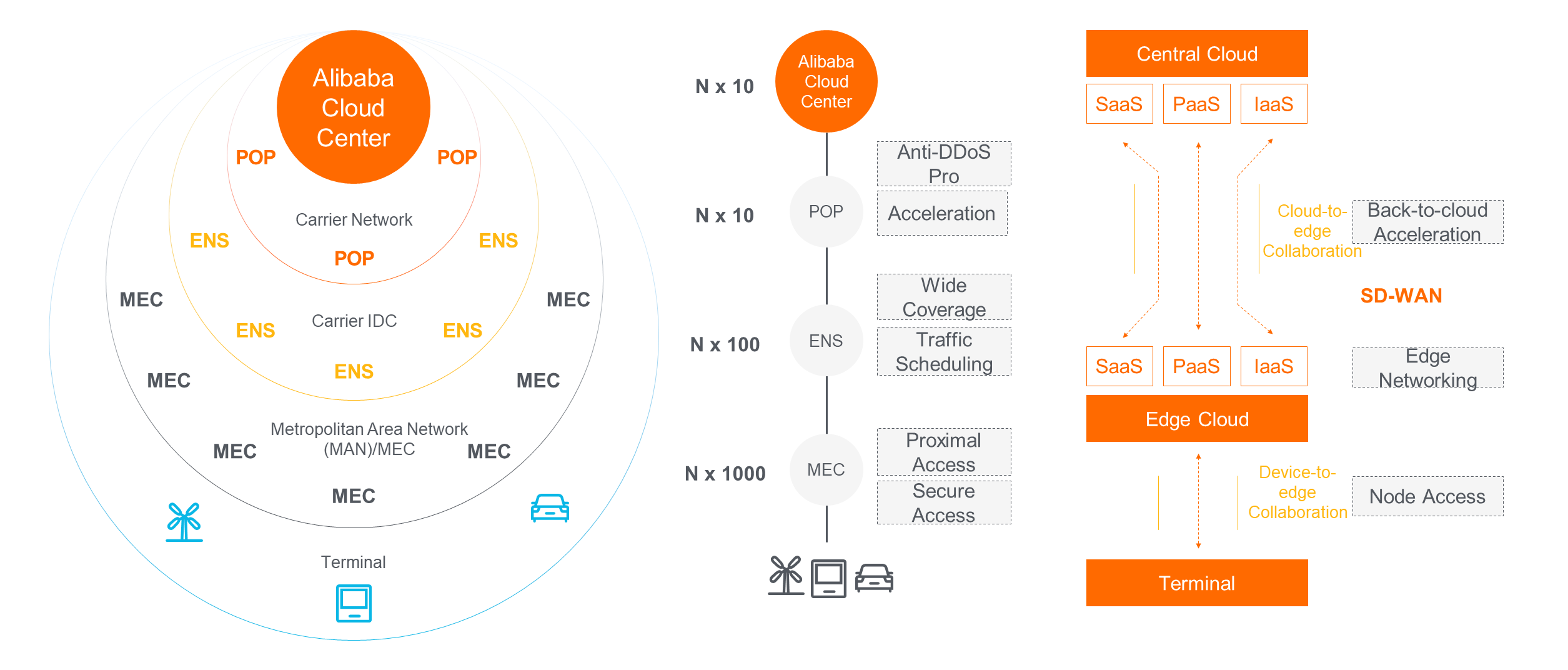
In the cloud-network integration capabilities, besides the cost, the business scenario is most concerned with the Quality of Service (QoS). Under the cloud-edge-device process, different segments adopt different QoS policies. There are three different data transmission scenarios:
The QoS segments of the comprehensive process can be divided into the following three segments:
In the scope of a 5G core network or MEC, the control of QoS policies needs to be realized based on the connection of operators' 5G capabilities. This segment of the QoS guarantee can improve the network quality of terminal access.
The segment from MEC to data center belongs to the category of the carriers' Internet. In this segment, an Overlay SD-WAN network was built based on the widely distributed data center resources to block Internet traffic fluctuations and achieve business traffic control and scheduling.
The further improvement of the network quality of the transmission process goes back to the cloud by supplementing the carriers' Internet with private carrier lines between the data center and the cloud center.
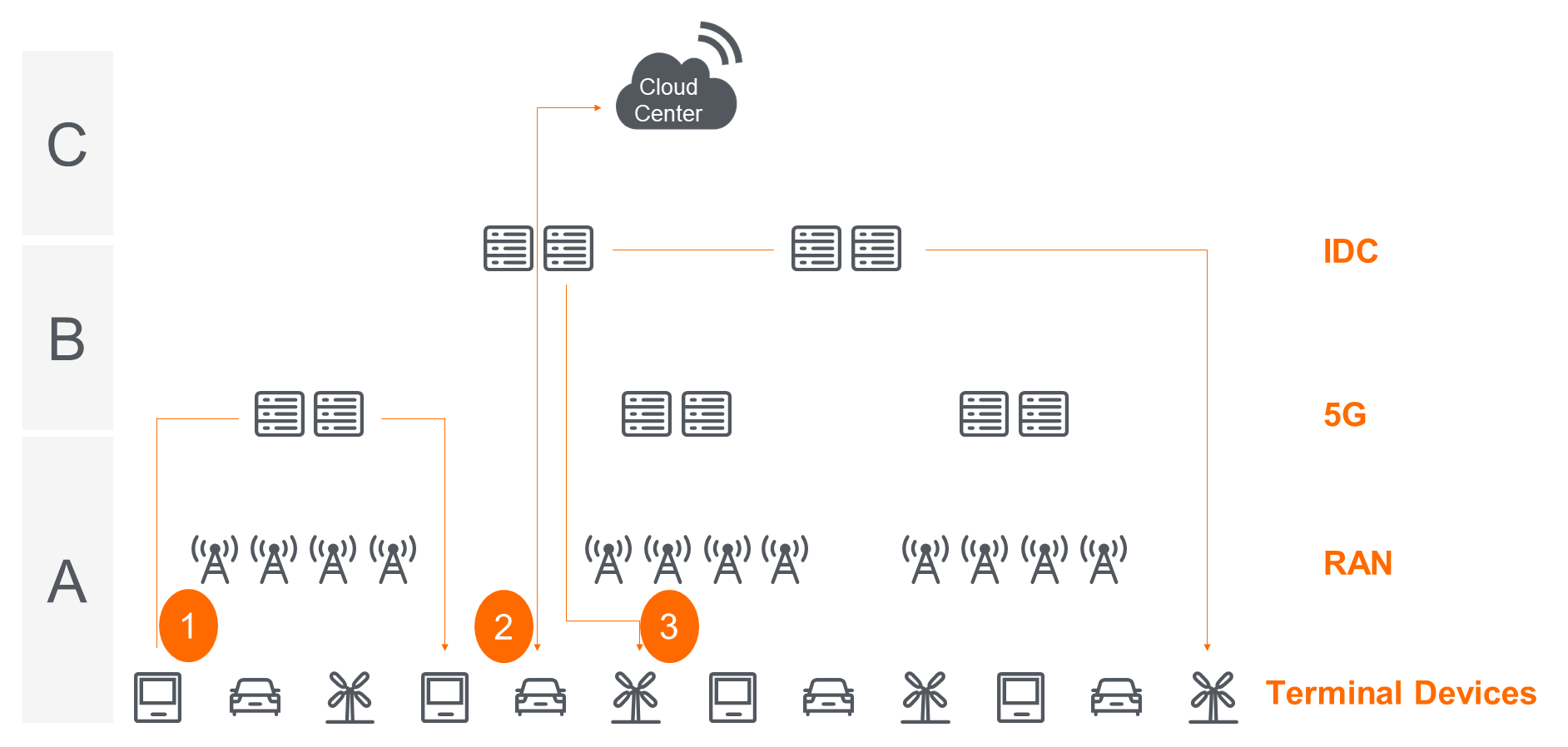
Different process QoS policies in different scenarios
Finally, the QoS control and scheduling capabilities of these three networks are integrated to provide integrated QoS support of the device-to-device comprehensive process for upper-layer business applications, reducing the O&M complexity at the business application layer.
Edge computing has changed computing forms and made it possible to implement more business scenarios. However, the diversity of computing forms and distribution has increased the technical complexity. 5G does not only bring edge computing closer. Alibaba Cloud's edge computing needs to shield businesses from complex computing distribution and data collaboration. It can help more business scenarios get implemented in the cloud-edge-device integrated computing form and maximize benefits and costs.
Alibaba Clouder - May 20, 2021
Alibaba Clouder - April 29, 2020
Alibaba Cloud Community - July 12, 2022
Alibaba Developer - July 9, 2021
Alibaba Clouder - January 19, 2021
VikashThakur - January 3, 2025
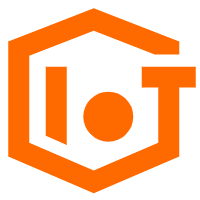 Link IoT Edge
Link IoT Edge
Link IoT Edge allows for the management of millions of edge nodes by extending the capabilities of the cloud, thus providing users with services at the nearest location.
Learn More Function Compute
Function Compute
Alibaba Cloud Function Compute is a fully-managed event-driven compute service. It allows you to focus on writing and uploading code without the need to manage infrastructure such as servers.
Learn More Edge Network Acceleration
Edge Network Acceleration
Establish high-speed dedicated networks for enterprises quickly
Learn More Elastic High Performance Computing Solution
Elastic High Performance Computing Solution
High Performance Computing (HPC) and AI technology helps scientific research institutions to perform viral gene sequencing, conduct new drug research and development, and shorten the research and development cycle.
Learn More